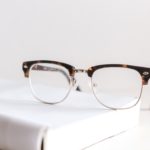In 2004, our SOI-IPP clinic was working with a number of mildly autistic students.
We were receiving referrals from a psychologist who offered sound therapy based on the work of the French physician Tomatis. All of the autistic students he tested had auditory processing issues – some of them quite severe. The psychologist was open to the benefits of IPP for his clients because he understood how improvements in auditory processing deficits need to be built on the foundational skills of sensory-integration. He had seen that for sound therapies to be fully effective long-term, a strong vestibular system is required.
One of the referrals, whose parents could not afford the Tomatis therapy, came to us.
Shawn was in fourth grade when we first tested him with SOI and IPP. The cognitive results showed that he had both above average and below average scores. His IPP scores were quite an eye-opener. With perfect 20/20 vision for both distance and close-up, his vision screening showed all his scores at the severe level. He also had poor balance and cross-over.
In SOI-IPP classes, Shawn enjoyed most of his modules or brain exercises. Not surprisingly, he struggled with most of the sensory-integration and vision exercises. Fortunately, his parents were patient with the time needed to develop each of the physical exercises to a mastery level. He took twice as long as most IPP students to complete. It was worth the time invested!
When Shawn finished his SOI-IPP program, his parents were thrilled! He had developed all his sensory-integration and ‘hidden’ vision issues to a moderate or no problem level. He had also made significant gains cognitively. What came as a major bonus was the progress he was making socially! He was the only one in his social therapy class who had made noticeable improvements in how he was interacting with his peers. He also was happier in school and far better behaved. Our IPP teacher was showered with flowers and chocolates in gratitude for her immense patience.
I was very interested to see how many of the mildly autistic students we worked with did have quite severe hidden vision issues and how effective our program was for them. We had one other ‘totally outstanding’ success and some mixed results. Not all students stayed long enough to complete their programs.
It would be great to see a study that investigated the role of visual and auditory issues with mildly autistic students. We know so much that can be done to correct hidden vision and auditory issues. It’s time to see how far we can go with these corrections!
written by: Connie Grist, SOI Associate






